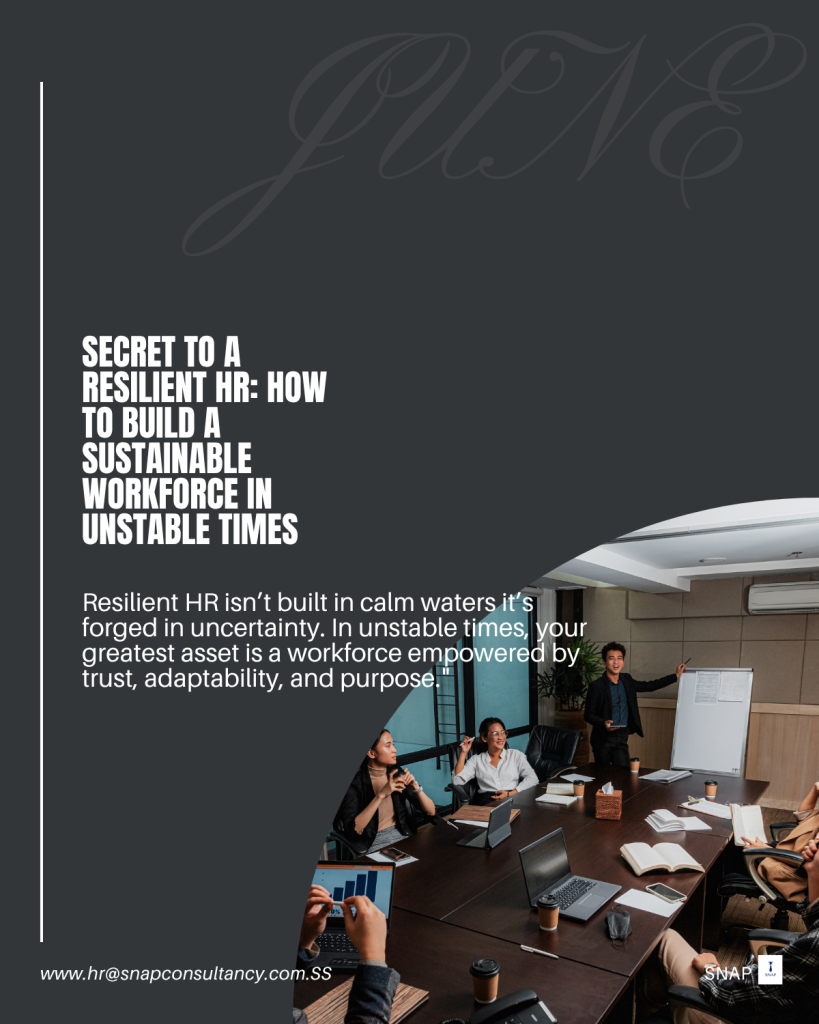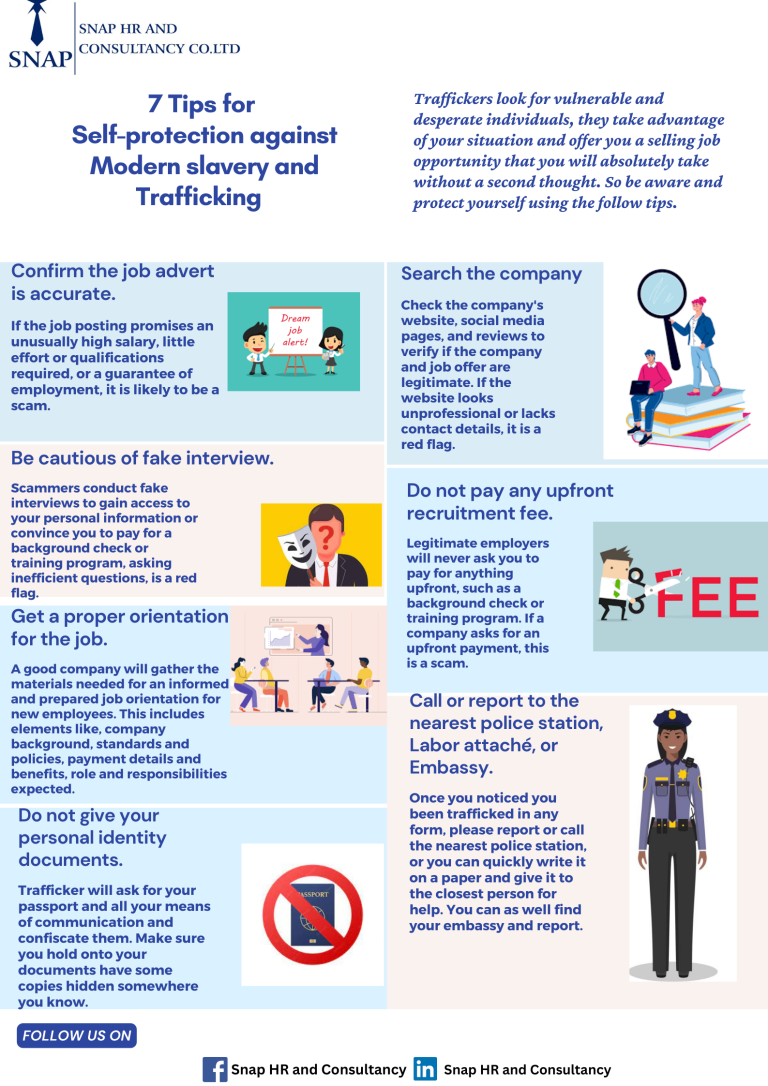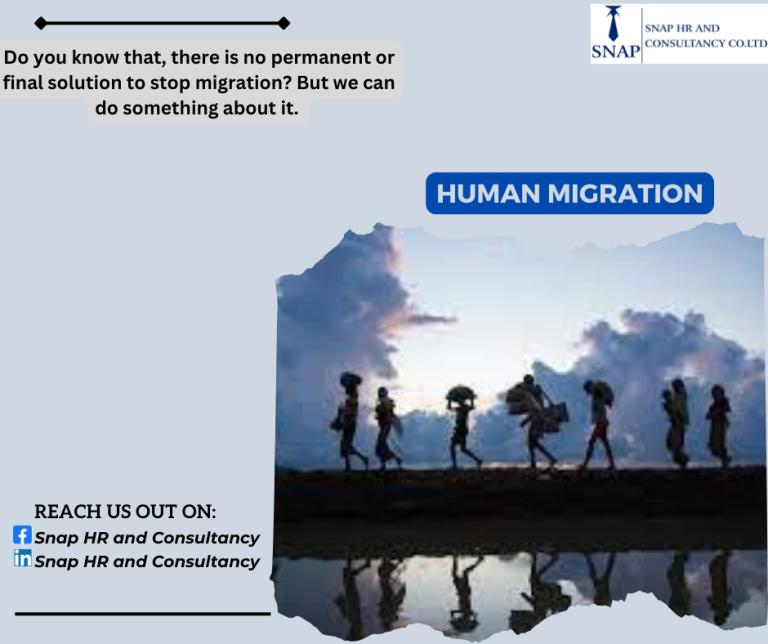Secret to a Resilient HR: How to Build a Sustainable Workforce in Unstable Times

Introduction
In South Sudan’s ever-changing economic and social climate, organizations are being forced to rethink how they manage people. The traditional “hire and hope” model is failing. Companies are losing staff, morale is low, and many teams are stuck in survival mode. But this isn’t just a crisis it’s an opportunity to build better.
1. Structure Before Pressure
When times get hard, the first thing to break is a weak internal system. HR policies must be proactive, not reactive. This includes:
- Clear employment contracts
- Internal HR manuals
- Job grading and salary structures
- Communication lines and reporting systems
2. Retention Over Recruitment
It’s more cost-effective to retain good staff than to keep replacing them. Focus on:
- Consistent recognition (even verbal or informal)
- Flexible work practices when possible
- Small welfare perks (transport, airtime, lunch subsidies)
- Career growth conversations
3. Communication is Currency
Teams do not leave bad jobs they leave confusing workplaces. In times of crisis, leaders must overcommunicate:
- Be honest with staff about business realities
- Reassure them with updates and plans
- Assign team leads and clarify roles
4. Salary Alone Won’t Save You
Even though salary is critical in this economy, workers are looking for more than just pay. They want:
- Respect
- Stability
- Growth
- A leader who listens
5. HR Should Sit at the Decision-Making Table
Treating HR like an admin tool is what got many businesses here. Your HR team should help design your future, not just process leave forms.
Conclusion
Crisis reveals character not just of leaders, but of systems. Now is the time to build resilient HR foundations that not only survive but thrive through storms. And Snap HR is here to help you do just that.



